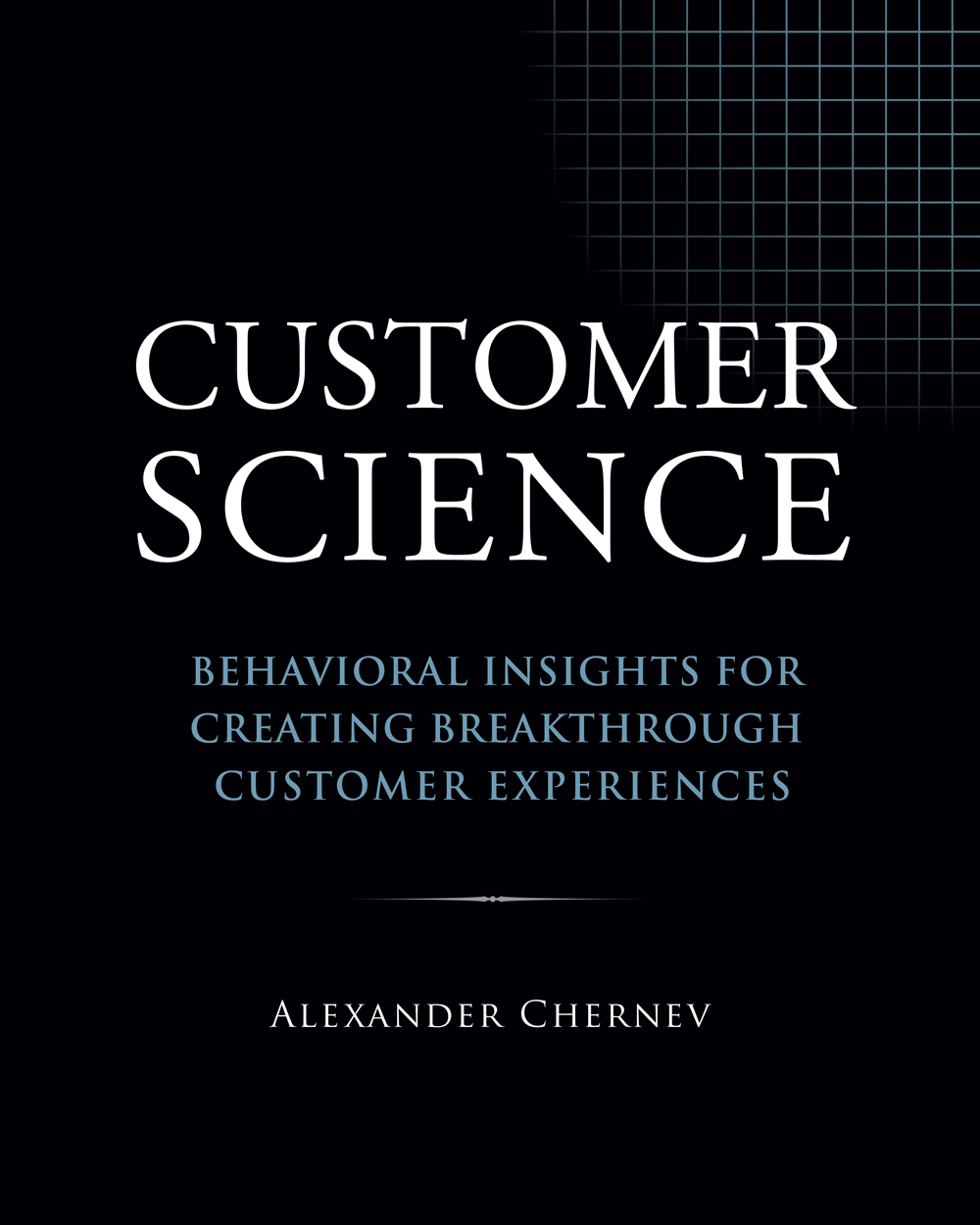Customer Science
Published July 2022| ISBN: 9781936572755 (Paperback); 9781936572786 (Hardcover)
Physical copy: Amazon.com | Barnes & Noble
eBook: Kindle | Apple Books | VitalSource
Bookstores can place orders with Ingram or Cerebellum Press
Permissions can be obtained from Copyright.com, Study.Net, XanEdu, and Cerebellum Press
Table of Contents
Customer Science contains eight chapters as follows:
-
CHAPTER 1: CUSTOMER SCIENCE AS A TOOL FOR CREATING MARKET VALUE
Customer Science as a Business Discipline
Customer Science and Managerial Intuition
Customer Science and Marketing Research
Customer Science, Data Analytics, and Artificial Intelligence
The Customer Science Framework for Creating Customer Value -
CHAPTER 2: DESIGNING MEANINGFUL TRIGGERS
Needs and Triggers
Triggers as Action Drivers
Triggering Functional Needs
Triggering Emotional Needs
Triggering Identity Needs -
CHAPTER 3: CREATING AN ENGAGEMENT MINDSET
Thinking Fast and Slow
Drawing Attention
Attention and Information Processing
The Power of Associations
Managing Involvement -
CHAPTER 4: CREATING CUSTOMER VALUE
Understanding Customer Value
Reference-Point Dependence
Loss Aversion
Diminishing Marginal Value
Inferential Reasoning
The Three Domains of Customer Value -
CHAPTER 5: CRAFTING THE CHOICE ARCHITECTURE
Thinking and Deciding
Choice Based on Reasons
The Invisible Influence of Choice Context
Choice Overload and Decision Fatigue
The Power of Defaults -
CHAPTER 6: BEHAVIORAL NUDGING
From Choice to Purchase
Action Drivers and Action Barriers
Cognitive Barriers to Action
Emotional Barriers to Action
Implementational Barriers to Action -
CHAPTER 7: ORCHESTRATING IMPACTFUL EXPERIENCES
The Consumption Experience as a Process
Key Consumption Decisions
The Power of Habituation
Emotional Engagement
Creating Memories -
CHAPTER 8: MANAGING CUSTOMER LOYALTY
Understanding Customer Loyalty
Functional Loyalty
Emotional Loyalty
Identity Loyalty
Behavioral Loyalty

